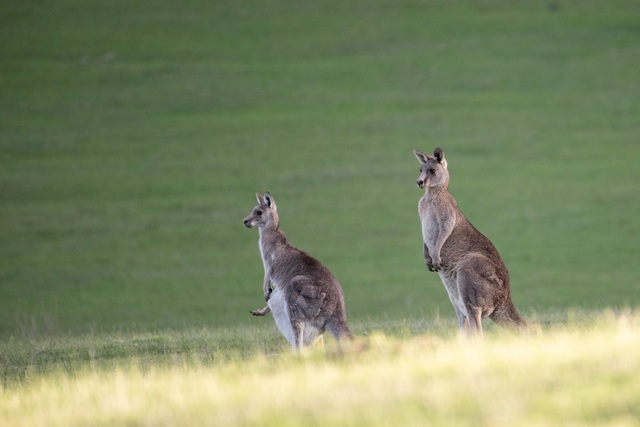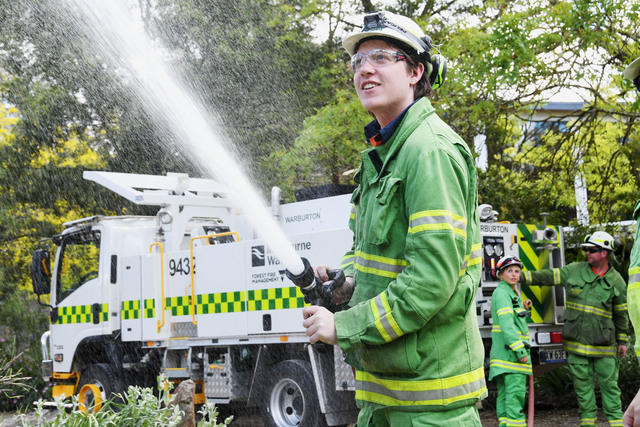Eastern Golf Club in Yering confirmed it is experiencing phalaris staggers, which is impacting the kangaroo population.
Star Mail delved into what phalaris staggers is and how it affects kangaroos through an interview with Dr Tian Chen.
Dr Chen is a wildlife veterinarian in Victoria who studied phalaris staggers for his PhD at the University of Melbourne’s Veterinary School, and has been working on the disease for the past four years.
He said phalaris staggers is a neurological disease of animals caused by ingesting an introduced pasture grass used for agriculture called phalaris aquatica.
“During certain seasons (autumn and winter), the grass produces neurotoxins from a chemical group known as tryptamine alkaloids. The toxins are slow to build up, often requiring the animal to be consuming phalaris for over several weeks before developing notable disease. Multiple macropod species are known to be susceptible to the disease, including several kangaroo and wallaby species,” the wildlife veterinarian said.
“Initially, kangaroos may be seen with head wobbles with ears pointing downwards instead of straight up. This will then develop into incoordination when hopping, where they are often described as being drunk, with zigzag hopping, tail swaying in all directions, and sometimes even circling to keep balance.
“At the final stage of disease, animals are often seen with muscle tremors causing them to fall repeatedly when disturbed and being mentally obtunded (depressed look), they may allow people to get very close to them due to their reduced awareness of surroundings, but can still be incredibly dangerous when agitated.”
According to Dr Chen’s explanation, there are currently no treatment options available for phalaris staggers.
“Cobalt, sprayed onto pasture or used as a drench for sheep and cattle, is known to be a preventative treatment for the disease, but it must be done before the autumn and winter season,” he said.
“This has been shown to be unsuccessful in preventing the disease in kangaroos. We are still working on finding out why this is the case, but differences in gastrointestinal tract anatomy and gut bacteria may be the reason.”
Although not yet backed by scientific literature, Dr Chen shared some of his theories and recommendations for controlling staggers.
1. Removal of the grass (can be in stages, as long as there is progressive reduction): Herbicides, physical removal, especially during its dormancy stage and planting plants that can compete and prevent it from coming back. For detailed methods, the golf club should consult a horticulture professional.
2. Exclusion: If there are small areas of concentrated phalaris, barriers can be built to prevent kangaroos from grazing in those areas. This can be costly, may need ongoing maintenance and could be unsightly.
“The staggers can be seasonal and vary greatly in severity year to year due to weather patterns also affecting how toxic the grass can become,” Dr Chen said.
“If the golf club is only seeing cases on occasional years, a more sustainable method could also be: 1. Put up signs to advise visitors of the current condition and ask them to stay away from kangaroos during the high-risk season for their safety, and report any suspected cases to the club. 2. Contact local wildlife rescuers and report any incidents to them so they can maintain animal welfare during the high-risk season (possibly for three to four months).
“Unfortunately, some animals may require humane euthanasia if their welfare is compromised, but often this is in a small number of cases.”







